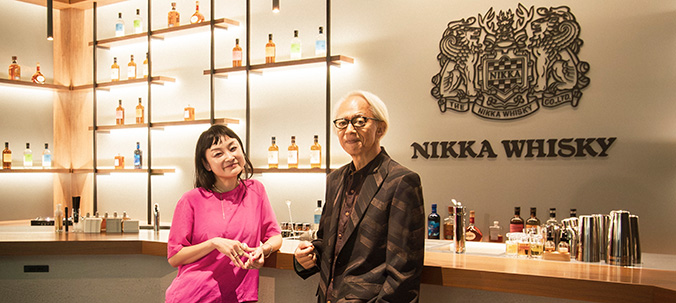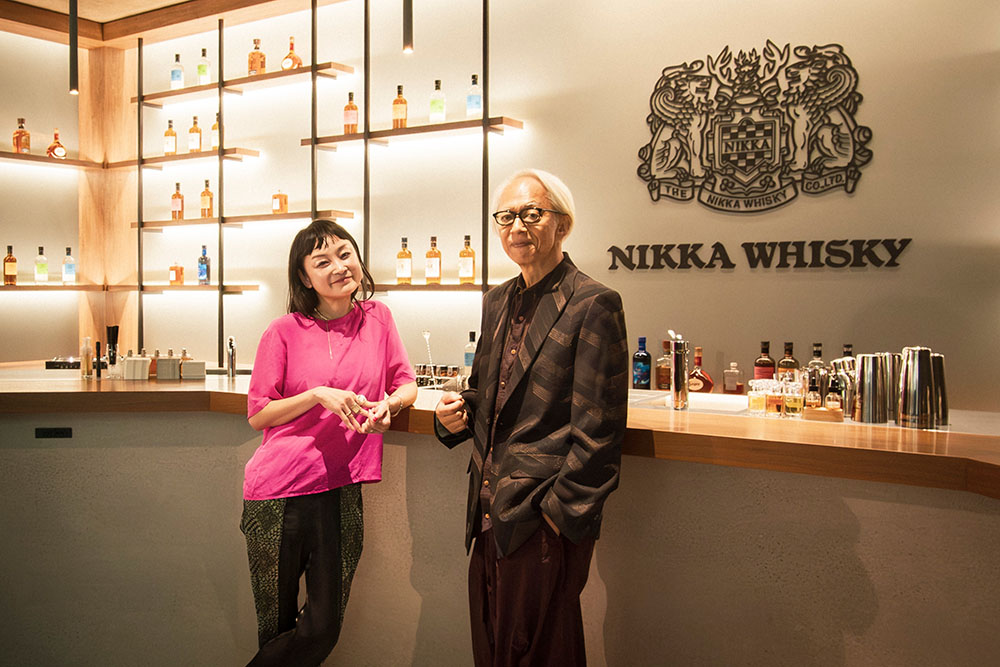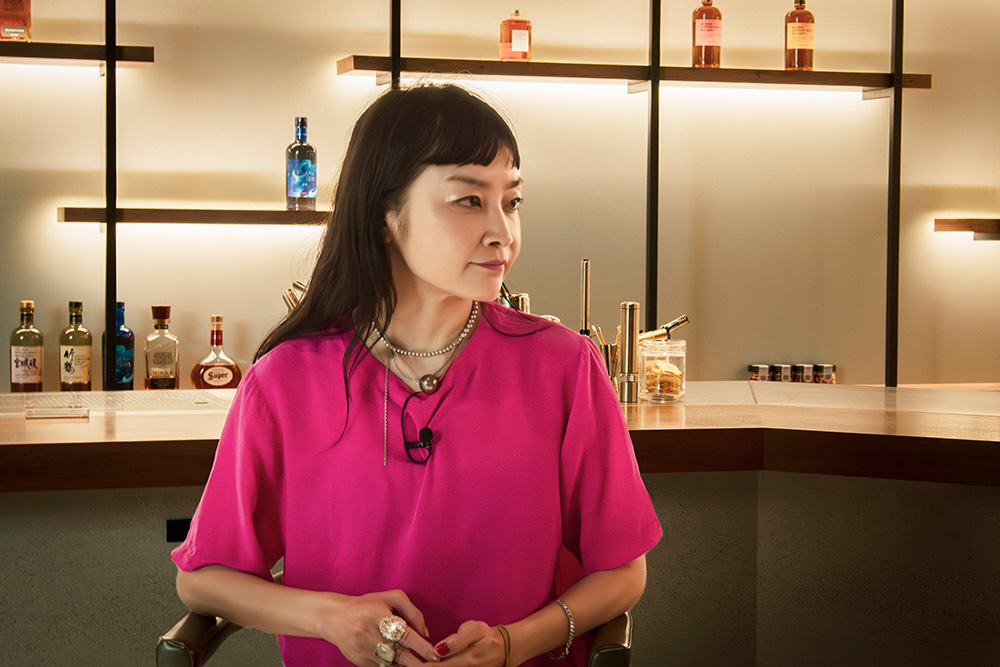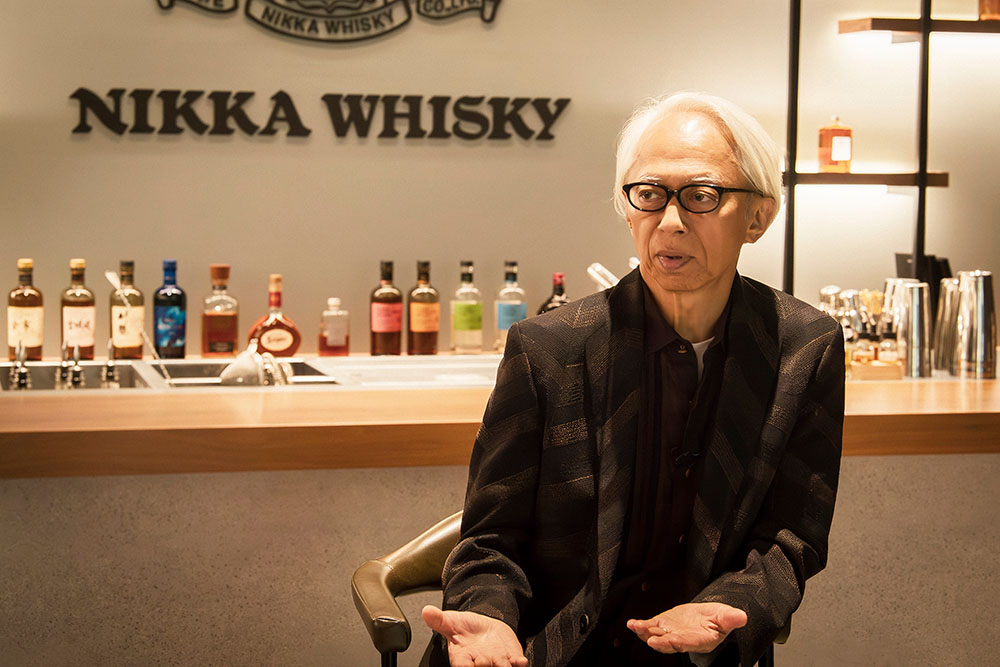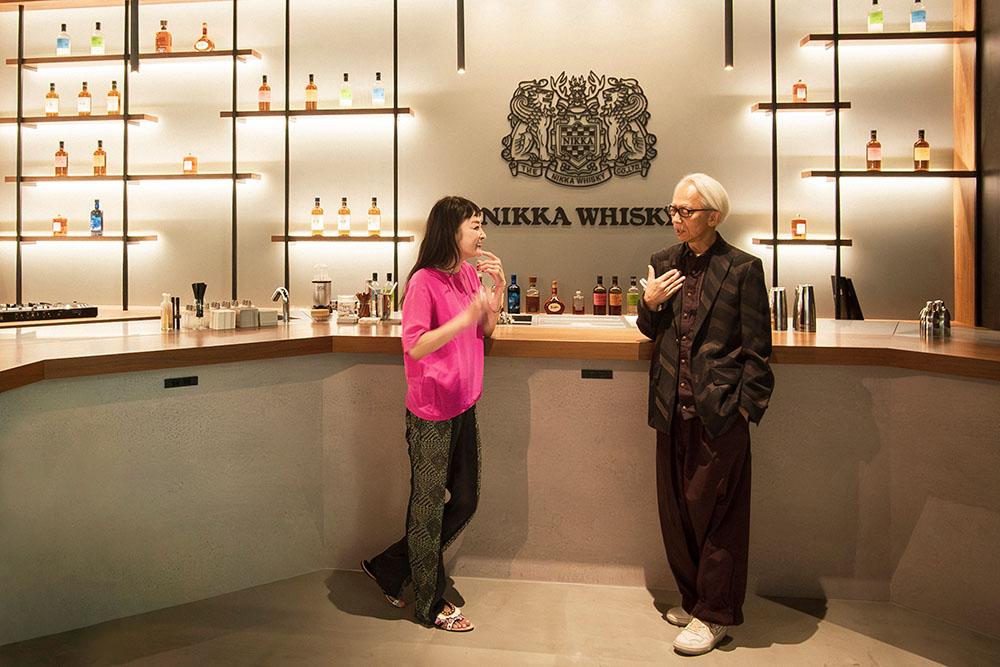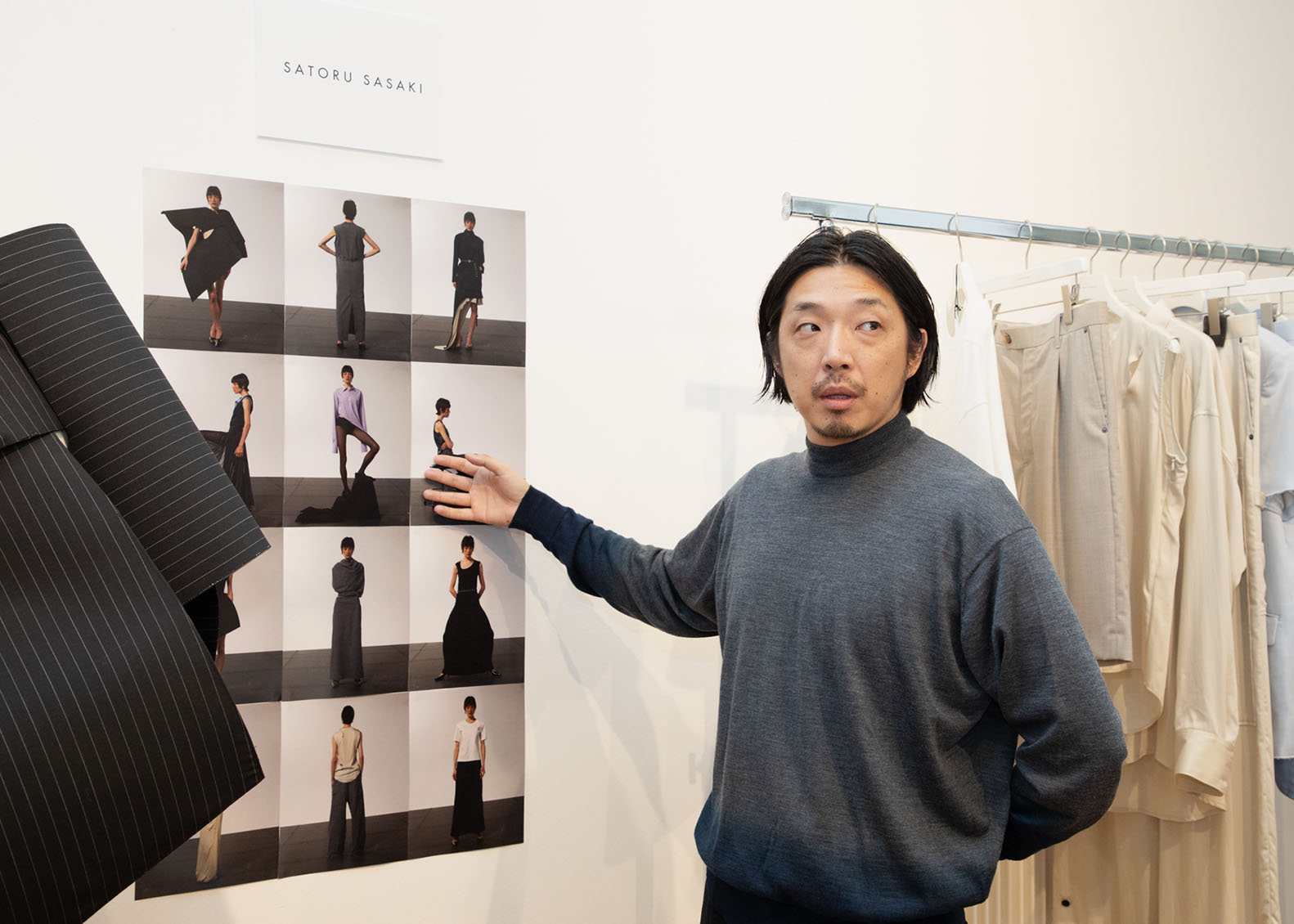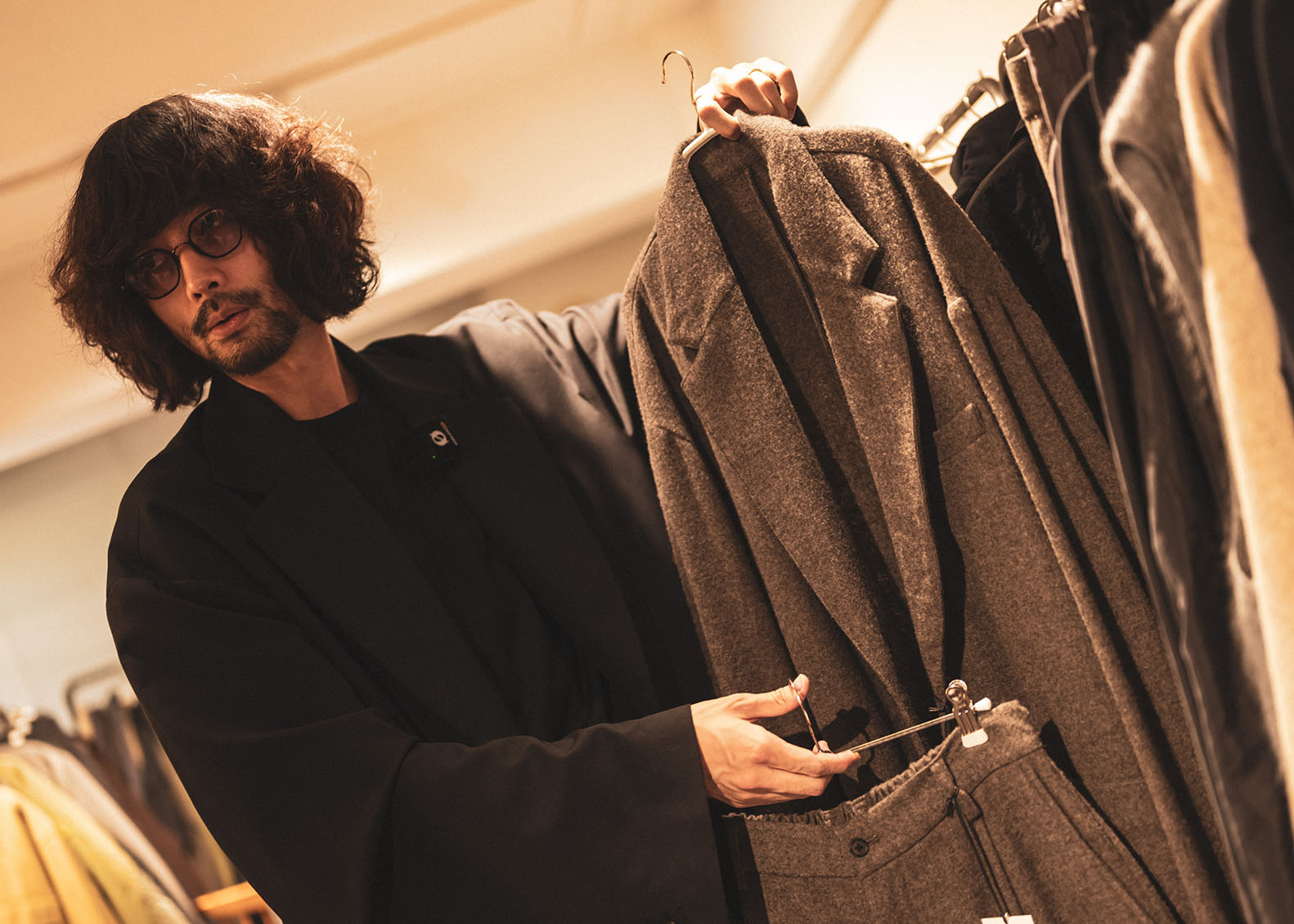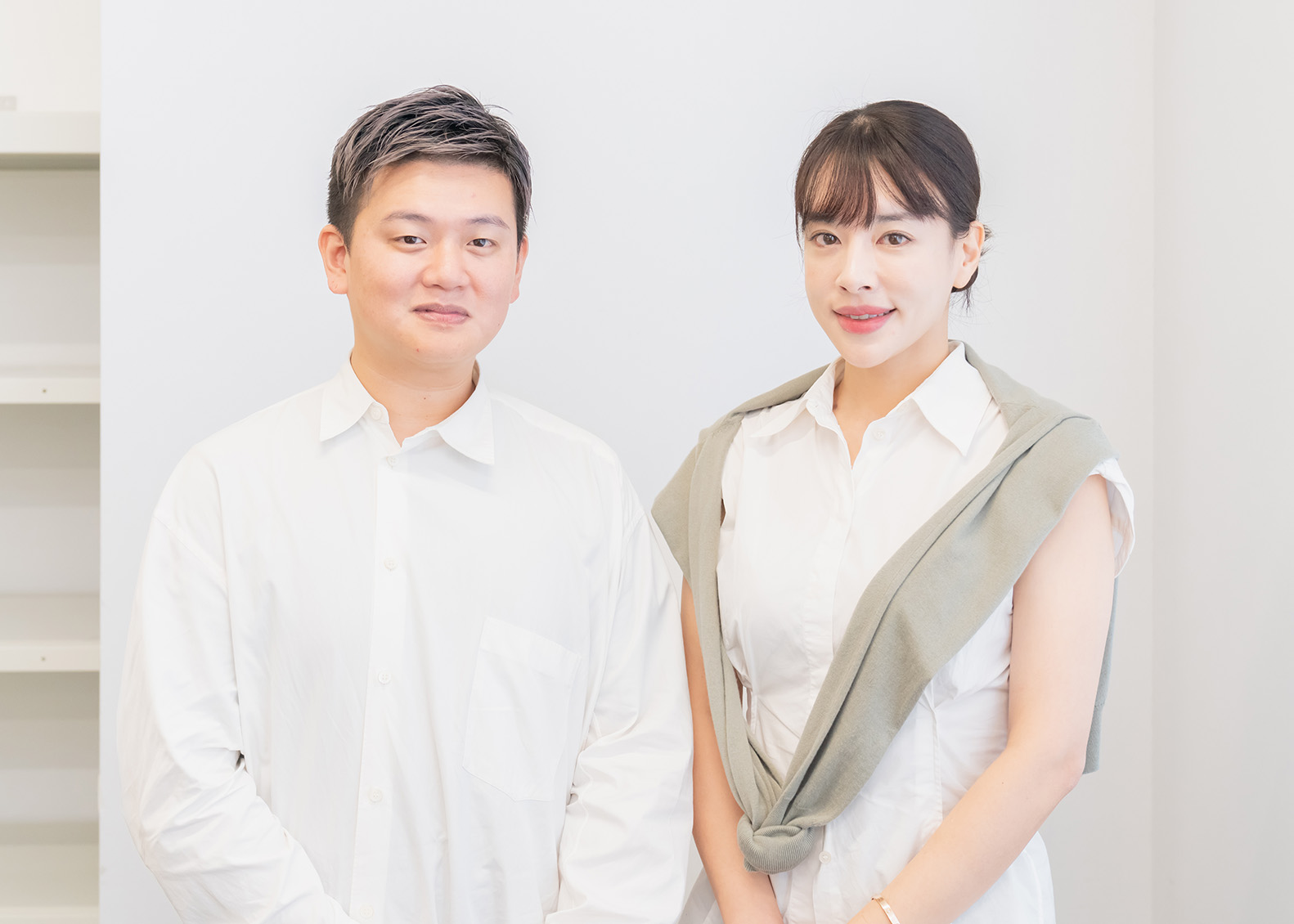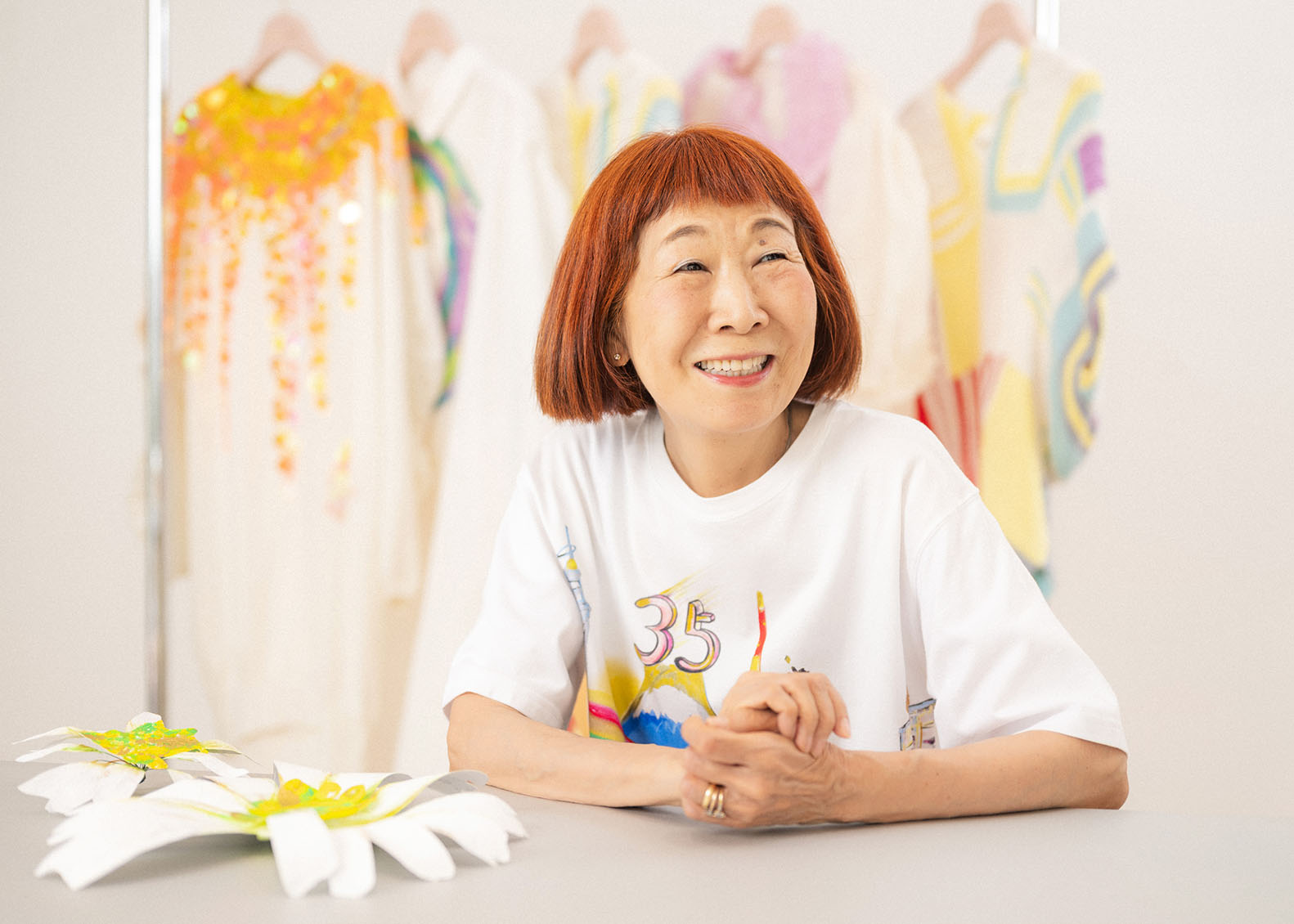Fashion Experts Share Their Tips on Enjoying Rakuten Fashion Week TOKYO
With Fashion Week just around the corner, we invited Rei Shito, a street photographer and journalist renowned for capturing Rakuten Fashion Week TOKYO from her unique perspective each season, and Hirofumi Kurino, Senior Advisor of United Arrows and a leading figure in the Japanese and international fashion industries for the past fifty years, to discuss what they’re most looking forward to and how best to enjoy the event.
Rei Shito (S)
As Rakuten Fashion Week TOKYO approaches, I’d like to ask you, as a seasoned fashion expert, about your approach to watching shows. First, I’m curious to know what aspects you focus on when viewing a show. Do you read the designer’s show notes placed on the seat? Or do you prioritize your own first impressions and watch the show without looking at any notes?
Hirofumi Kurino (K)
Some brands don’t provide show notes, but I will always read them if they’re available. I understand that some people prefer to go into a show with a blank slate, but as a buyer, I want to fully grasp the essence of a collection and convey it to my clients. That’s why I prefer to view a show with an understanding of what the designer or brand is thinking and proposing. However, if your goal is purely to enjoy the show, it might be a more impactful experience to approach it without any prior information, similar to visiting a museum or watching a film.
I also pay attention to the venue’s atmosphere, the timing of the show’s start, and the closing music to understand the designer’s concept. And, of course, I always make note of the opening and closing looks.
S:
Many people may not know to look for these kinds of things.
K:
As models have increasingly become stars in their own right, you sometimes see show openers cast for their publicity value. But in Tokyo, the situation is different; brands make decisions about the looks based less on a model’s fame and more on the clothes and designs themselves.
S:
Is the designer’s message most potent in a show’s opening and closing looks?
K:
I’ve always seen it that way. I suppose some brands prefer to end a show quietly, but the opening and closing looks typically feature strong designs that serve as the designer’s signature.
S:
Your perspective is very insightful, including for our many readers who will be watching the shows online. Could you also share some tips for first-time viewers on how to enjoy the shows?
K:
When it comes to the models, there’s always one who represents the collection in the casting. This might be the model who opens the show or the one wearing the look the designer most wants to highlight. If that model appears two or three times in different looks, it’s interesting to imagine the story behind each one, as each likely carries its own message. I also encourage the audience to consider whether they would want to wear and buy the clothes themselves. Even when I’m watching a women’s show, I think to myself, “If I were a woman, would I want to wear that?”
S:
Fashion shows often feature challenging or avant-garde clothing, but approaching the show this way can make it more relatable. Watching it with a buyer’s mindset can bring everything into sharper focus.
K:
Conversely, some people take it upon themselves to play the role of ‘critic,’ trying to fit what they see into their pre-formed conclusions.
S:
Right—for example, let’s say “diversity” is trending. It can be tempting to shift your perspective and write in a way that aligns with that trend. I try to avoid doing this, but sometimes I do get pulled in. By the middle of Fashion Week, you can start to see an overarching theme for the season emerge, but I consciously try to distance myself from it.
Speaking of which, I was amazed when you once predicted before a Louis Vuitton show, “Marc Jacobs will show pajamas next,” and then he actually did! How is it that you’re able to predict what will be shown?
K:
When you observe things analytically, you can begin to anticipate what’s coming. I’ve watched every one of Marc Jacobs’s shows since he became director of Louis Vuitton. Seeing his designs evolve over time, from an attraction to glamour back to simplicity, allowed me to gain insight into his thinking. The pajama show followed several seasons of more everyday, approachable styles, and I had also seen Marc himself wearing casual, pajama-like clothing. That’s probably why I predicted it. That, and the show itself had a room-like atmosphere.
S:
So, you’re saying it’s important not only to appreciate each individual look but also to grasp the show as a whole and consider its continuity from season to season.
K:
Audience members are often also customers of the brand, so they might be watching the show thinking about what kind of clothing they’d like to wear next. Someone who can simultaneously put themselves in the designer’s shoes and understand their mindset as a creator has the potential to become an excellent buyer. Critics can afford to take a more detached stance, but buyers cannot. It’s crucial to watch shows with the intent to buy, to wear, and to be invested in the outcome.
The beauty of fashion is that you can wrap yourself up in it, unlike sculpture or painting, which you can’t wear or walk around with. The true charm of fashion is the ability to move through the world in a creation you respect.
S:
Do you pay attention to the hair and makeup at shows?
K:
I’m not particularly well-versed in makeup, but I do make note of it. Natural makeup has been most prevalent in recent years, but maybe a few times a year, I’ll come across a really striking makeup look. Sometimes, the act of hiding the face can become a performance in itself.
S:
I noticed many shows last season during Paris Women’s Fashion Week where the models’ faces were hidden. Their faces were masked, or their bangs were long, making you wonder, “Who is the model?” Fashion shows increasingly resemble red-carpet events, where people come to see the faces of celebrities rather than the clothes. The designers seemed to be satirizing that phenomenon by covering the models’ faces.
K:
When the face is concealed, it forces you to focus on the clothes. It becomes irrelevant whether the model is beautiful or handsome, and it’s certainly an effective way to get the audience to focus.
S
What are you most looking forward to at Rakuten Fashion Week TOKYO?
K:
Shows overseas are becoming too much of a money game, overly focused on celebrities and social media. While Tokyo’s shows might not feature big-name brands or major stars, this allows for a purer appreciation of the clothes themselves. It’s always deeply satisfying to see brands present their collections to people who are genuinely excited about fashion. So, as always, I plan to attend as many shows as I possibly can.
S:
This promises to be another exciting season, featuring many newcomers alongside some brands celebrating their 20th anniversary! Another thing I appreciate about Rakuten Fashion Week TOKYO is that even without an invitation, there’s a chance you might get in if you go to the venue. I hope students and others who want to experience a show firsthand will go and try their luck!
Interview by Tomoko Kawasaki
Photography by Daichi Saito
Born in Kaga and currently based in Tokyo. Graduated from Waseda University.
One of Japan's leading street-style photographers/journalists.
She has about 200,000 followers on SNS (as of August 2024).
With the motto “It's not what you wear, but how you wear.
Every season, she travels to fashion week around the world to take snapshots that suit her aesthetic eye.
In October 2020, “Style on the Street: From Tokyo and Beyond” was published simultaneously worldwide by Rizzoli in the United States.
She is streaming a popular YOUTUBE channel “Shito Rei Channel NEW!"
Hirofumi Kurino
Born in 1953. Studied aesthetics at university and entered the fashion retail industry after graduation.
After working at Suzuya and BEAMS, established United Arrows in 1989 and became Managing Director.
Appointed Chief Creative Officer from buying, direction, and brand supervision
After retiring from the board of directors in 2008, became a senior advisor (up to the present)
Awarded Honorary Fellow of the RCA (UK) in 2004.
Member of the LVMH Prize Jury since 2015 (to date)
Awarded Mainichi Fashion Grand Prix and Amiko Kujiraoka Special Prize in 2023
In 2024, Lifetime Achievement Award from the Pitti Uomo Association, Italy
He is also involved in the training of the next generation through “Koko no Gakko” and FFP.
He also supports domestic companies through the Tokyo Knit Project and the Japan Quality Project.
Rei Shito
[ Instagram ] https://www.instagram.com/reishito/
[ Youtube ] https://www.youtube.com/@rei_shito
[ X ] https://x.com/stylefromtokyo
[ Threads ] https://www.threads.net/@reishito
Hirofumi Kurino
[ Website ] https://www.united-arrows.co.jp/index.html
[ Instagram ] https://www.instagram.com/unitedarrows_official/
[ X ] https://twitter.com/UnitedArrows
[ Facebook ] https://www.facebook.com/UNITEDARROWS.jp
[ Youtube ] https://www.youtube.com/user/UnitedArrowsOfficial
Venue provided by
The Nikka Whisky Tokyo
Address: 1F, 3-5-27 Kita-Aoyama, Minato-ku, Tokyo
Opening hours: 7 Aug – 25 Dec
Opening hours: Mon-Fri: 17:00-23:30, Sat-Sun/holiday: 14:00-23:30
[ Website ] https://www.nikka.com/thenikkawhiskytokyo/

